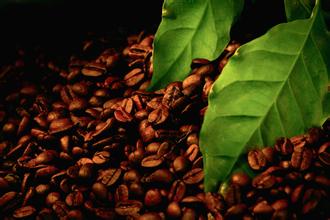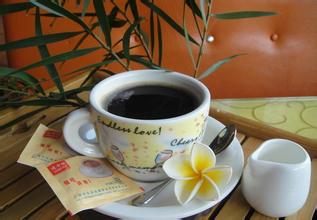Full-bodied jasmine fragrance of Ethiopia Yega Ficher Manor Coffee Flying taste introduction
In December 1994, the Constitution of the Federal Democratic Republic of Ethiopia was formulated. According to the Constitution, Ethiopia will implement a federal system and a parliamentary cabinet system after the general election for a term of five years. After the national election in May 1995, the Federal Democratic Republic of Ethiopia was established on August 22, and Meles became prime minister in her capacity as chairman of the majority party of the people's House of Representatives. On May 14, 2000, Ethiopia held a national election, and EGF defeated other opposition parties by an absolute majority to stay in power. In October, the new federal parliament and government were established, and the speakers of both houses and Prime Minister Meles were re-elected, and the original cabinet also remained in office with the approval of the parliament. In October 2001, May readjusted government institutions and reshuffled the cabinet, adding the Ministry of Youth, Sports and Culture and the Ministry of Taxation, and set up a new cabinet composed of 18 ministers in Ethiopia, mainly the mountain plateau, the main part of the Ethiopian plateau, the central and western part of the plateau, accounting for 2x3 of the whole territory, the East African Rift Valley runs through the whole territory, with an average elevation of nearly 3000 meters, known as the "roof of Africa". The terrain around the plateau is gradually declining. The Darol depression in the north fell to 113 meters below sea level, the lowest point in the country. The coast of the Red Sea is a narrow banded plain. Deserts and semi-deserts in the north, south and north-east account for about 25% of the country's area. Dashan Peak in the Ximen Mountains is 4623 meters above sea level. It is the highest peak in Ethiopia. Ethiopia is rectangular, with a ratio of length to width of 3:2. From top to bottom, it is composed of green, yellow and red parallel equal horizontal rectangles, with the national emblem in the middle of the flag. Since the end of the 19th century, Ethiopia began to use the green, yellow and red cross-striped national flag. In modern history, Ethiopia is the first African country to join the forest of free nations. [8]
In the fifties and sixties of this century, many African countries became independent one after another and adopted green, yellow and red as the colors of the national flag, so they were called "pan-African colors". Ethiopia is one of the ancient countries in Africa, with a long history of more than 3000 years, giving green, yellow and red colors deeper roots in this land. Historically, they are closely related to the liturgy of the Coptic church, and are worshipped as the symbol of the trinity of the Father, the son and the Holy Spirit, reflecting the three virtues of loyalty, hope and kindness advocated by human freedom. These three colors also represent three regions of Ethiopia: Tikleh (red), Amhara (yellow) and Theo (green). Green represents fertile land, mild climate and rich plant resources, but also symbolizes hope for the future; yellow symbolizes peace and fraternity, as well as the people's determination to build the country; red symbolizes that the people are ready to shed blood and sacrifice to defend the motherland.
Yejassefi's coffee trees were planted by European monks (a bit like Belgian monks growing wheat to brew beer) and were later transferred to farmers or cooperatives. Yejia Chuefei is actually constructed by surrounding coffee communities or cooperatives, including Edido Idido, Hafusa Harfusa, Hama Hama and Biloya near Fog Valley Misty valley, all washed with water, but there are also a small number of off-product beans engraved with sun to enhance the charming fruit aroma and mellow thickness. These mountain villages are foggy, like spring all year round, with a gentle breeze in summer, cool but not hot, rain but not damp, and no cold damage in winter, giving birth to a unique regional flavor of citrus and flowers. Coffee trees are mostly planted in farmers' own backyard or mixed with other crops in the field, the yield per household is not much, it is a typical rural coffee. Yega Xuefei won the prize beans almost from the above-mentioned coffee villages and communities.
The so-called "Yega Chuefei" refers to the strong aromas of jasmine, lemon or lime acid, as well as peach, almond or tea. However, this season, the blueberry flavor of Chuefei dry fragrance is particularly prominent. After grinding, the room full of blueberry fragrant Yirga cheffe is a small town in Ethiopia, 1700-2100 meters above sea level, which is also synonymous with Ethiopian boutique coffee. It has been a wetland since ancient times. The ancient saying "Yega" yirga means "settle down", and "Xuefei" cheffe means "wetland", so Yega Xuefei means "Let's settle down in this wetland".
Strictly speaking, Yega Xuefei is a by-product area of Ethiopia's Sidamo Sidamo province, located northwest of Sidamo, along the mountain with paste, is one of the highest coffee-producing areas in Ethiopia. However, the mode of production and flavor here are so prominent that Ethiopian coffee farmers compete to take pride in the flavor of their coffee, so they are independent from Sidamo and become the most famous producing area in Africa. Traditionally, Yega snow coffee is treated by the oldest sun treatment, but in 1972, Ethiopia introduced Central and South American washing technology to improve its quality. It makes the jasmine and citrus fragrance of Yejiacheffe more clear and refined, and it has become the best product of the world's fine beans, thanks to its exquisite washing technology. Since the 1970s, it has basically been washed with water. However, in the past two years, Yejasuffe has been out of its normal state and launched amazing sun-dried beans frequently! There is a strict standard for collecting red fruits (as a result of coffee trees). Before exposure to coffee fruits, unripe green fruits or defective fruits are removed manually, and damaged or moldy fruits are removed during the sun drying process. after two weeks, the sugar and essence of the flesh and essence seep into the coffee beans, the water content is reduced to 12%, and then scrape the hardened pulp, pectin layer and pods with a planer. Take out the coffee beans and test the density and color of the beans. After eliminating the defective beans, finally, the workers picked out the defective beans with the naked eye and screened them layer by layer, resulting in the cleanliness and vulgarity of Yejia snow caffeine sun-dried beans and a strong attractive fruit aroma.

Important Notice :
前街咖啡 FrontStreet Coffee has moved to new addredd:
FrontStreet Coffee Address: 315,Donghua East Road,GuangZhou
Tel:020 38364473
- Prev

Fruit tea with a long aftertaste Ethiopian sidamo Charkiso coffee flavor Introduction
Haile Selassie was made regent in 1916 and king in 1928. He was crowned Emperor Haile Selassie I on 2 November 1930. In 1936, Italy invaded again, occupied Addis Ababa, conquered Ethiopia, and Selassie went into exile in London, England. Italy was defeated by the Allies in 1941, and Selassie I was restored on May 5 of the same year. After the 1974 coup d'état
- Next

Panamanian Illeta Estate Coffee Flavor Taste Features of the region
Panama is located in Central America on the Isthmus of Panama, east of Colombia, south of the Pacific Ocean, Panama map of Panama west of Costa Rica, north of the Caribbean Sea. The territory is S-shaped connecting North America and South America, and the Panama Canal connects the Atlantic Ocean and the Pacific Ocean from north to south, known as the world bridge. [5]Panama has an area of 75517 square kilometers and a length of
Related
- Does Rose Summer choose Blue, Green or Red? Detailed explanation of Rose Summer Coffee plots and Classification in Panamanian Jade Manor
- What is the difference between the origin, producing area, processing plant, cooperative and manor of coffee beans?
- How fine does the espresso powder fit? how to grind the espresso?
- Sca coffee roasting degree color card coffee roasting degree 8 roasting color values what do you mean?
- The practice of lattes: how to make lattes at home
- Introduction to Indonesian Fine Coffee beans-- Java Coffee producing area of Indonesian Arabica Coffee
- How much will the flavor of light and medium roasted rose summer be expressed? What baking level is rose summer suitable for?
- Introduction to the characteristics of washing, sun-drying or wet-planing coffee commonly used in Mantenin, Indonesia
- Price characteristics of Arabica Coffee Bean Starbucks introduction to Manning Coffee Bean Taste producing area Variety Manor
- What is the authentic Yega flavor? What are the flavor characteristics of the really excellent Yejasuffi coffee beans?

